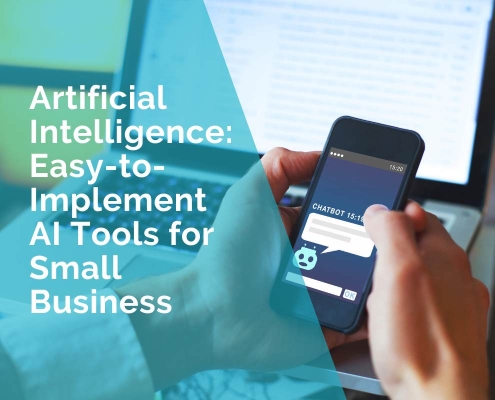AI in Managed IT Services: Reducing Downtime and Improving System Reliability
Picture this: your company’s critical systems shut down unexpectedly, leaving employees scrambling and productivity taking a nosedive. Downtime like this doesn’t just hurt operations; it chips away at client trust. For businesses relying on smooth IT performance, these interruptions feel costly and frustrating.
Here’s where AI steps in to save the day. By predicting issues before they happen and keeping systems healthy around the clock, AI changes how managed IT services work. In this blog, we’ll explore how AI reduces downtime, improves reliability, and makes resolving problems quicker than ever. Keep reading to find out how you can turn challenges into efficiency!
Key Advantages of AI in Managed IT Services
AI changes how IT services maintain system efficiency. It identifies problems early, preventing complications and saving time for businesses.
Minimizing downtime through predictive maintenance
Predictive maintenance uses machine learning to identify potential issues before they cause system failures. It analyzes telemetry data, spots unusual patterns, and alerts teams about risks early. This approach prevents surprise outages and reduces downtime by addressing problems in advance. For businesses relying on smooth operations, every minute saved means less revenue loss.
Continuous monitoring ensures better health for IT systems. Predictive tools provide real-time insights into performance data like disk usage or network bandwidth. Many organizations also turn to trusted providers such as computer support at Nortec to implement predictive monitoring and keep systems stable before small glitches snowball into outages.
Enhancing system reliability with real-time monitoring
Real-time monitoring acts as a vigilant observer over your IT systems. It swiftly detects irregularities, such as high CPU usage or unusual traffic spikes. This enables teams to address issues before they escalate into significant problems. Machine learning strengthens these systems by identifying trends that manual oversight might overlook. The outcome is fewer disruptions and enhanced system health.
Businesses looking for advanced monitoring solutions often rely on partners like OSG for Chicago IT companies to ensure real-time visibility and rapid responses to irregularities. These observations highlight potential weak points in infrastructure, reducing the risks of downtime. For managed IT services, this leads to steady performance and better client satisfaction. Improved monitoring also supports more efficient ticket management processes connected to the next key benefit of AI: automation in IT operations.
AI-Driven Automation in IT Operations
AI takes over routine tasks, allowing teams to concentrate on addressing more significant challenges. It also ensures workflows run smoothly and efficiently.
Streamlining ticket resolution and triage
Efficient ticket resolution is critical for maintaining system reliability. AI simplifies this process and saves businesses time.
- AI-powered systems quickly analyze support tickets using machine learning algorithms, identifying patterns and prioritizing tasks based on urgency.
- Real-time insights provide technicians with detailed information about recurring issues, improving fix accuracy.
- Automatic categorization of tickets reduces manual sorting, allowing faster assignment to the right teams or specialists.
- Predictive analytics help flag potential problems before they escalate into emergencies, minimizing downtime risks.
- Automated responses deliver instant updates to clients, keeping them informed without human delay, and improving client satisfaction effectively.
- Constant monitoring ensures service level agreements (SLAs) are met with consistent ticket follow-up and task completion tracking for better efficiency and accountability.
AI tools effectively handle time-intensive processes while enhancing team productivity, directly tied to business goals like uptime and customer trust.
Automating routine tasks and workflows
AI-driven automation assists IT teams in saving time and minimizing human error in daily tasks. It transitions focus from manual operations to thoughtful decision-making.
- AI tools routinely scan systems for vulnerabilities, ensuring consistent security checks without staff involvement. This minimizes oversight risks and protects system integrity.
- Automating software updates removes the need for manual installations, reducing downtime by promptly applying patches.
- Routine data backups are managed automatically, securing essential client information without interrupting everyday business activities.
- Workflow automation enables efficient ticket assignments based on priority or expertise, accelerating resolution times and enhancing client satisfaction.
- Machine learning examines usage patterns to anticipate peak periods and allocate resources effectively, improving operations during critical hours.
- AI-driven telemetry consistently monitors device performance, detecting issues faster than traditional methods would uncover manually.
- Regular inventory checks for hardware and software are automated, saving extensive time while maintaining an accurate IT asset record.
Automation not only simplifies repetitive tasks but also boosts overall productivity while reducing costs from preventable errors or delays.
Predictive Analytics for Proactive Issue Resolution
AI anticipates issues before they escalate into significant outages. It identifies trends that people might miss, ensuring systems remain stable and dependable.
Identifying potential system failures in advance
AI examines telemetry data and system health trends to detect anomalies promptly. It assesses patterns indicating hardware wear, software errors, or network slowdowns. This forward-thinking method avoids small problems escalating into significant outages.
Machine learning models forecast potential weaknesses in IT infrastructure by analyzing past incidents. These forecasts assist teams in resolving vulnerabilities before they interrupt operations. Early detection minimizes downtime risks, paving the way for quicker response strategies discussed next.
Reducing response times with AI insights
Spotting potential problems early is only half the battle. AI tools then take immediate action to analyze performance data and alert IT teams instantly. These real-time insights reduce delays by identifying root causes within seconds, not hours.
Automated systems rank issues based on urgency, ensuring critical tasks receive immediate attention. By processing telemetry and machine learning models, AI accelerates decision-making without waiting for human intervention. Faster response times mean reduced downtime and satisfied clients.
Integration of AI with Existing IT Systems
AI blends smoothly into current IT setups, offering practical advantages. It helps businesses adapt and stay productive without major disruptions.
Seamless compatibility with PSA, RMM, and ITSM tools
PSA, RMM, and ITSM tools integrate effortlessly with AI systems to simplify operations. This combination ensures centralized data flow across platforms, reducing manual input. Businesses can connect these tools with ease to monitor networks, manage incidents, and track tasks without any hassle.
IT service providers benefit from this alignment by gaining real-time insights into system health. Automation through these integrations allows faster ticket resolutions and improved workflows. By aligning with existing IT setups, AI removes operational challenges while improving overall efficiency for teams managing complex infrastructures daily.
Enhancing scalability and operational efficiency
AI improves IT systems to handle increased workloads without strain. It adjusts resources based on demand, keeping operations efficient during peak times. Machine learning studies data patterns to predict future needs, reducing inefficiencies. Automation removes repetitive tasks like patch management and software updates. Teams can then concentrate on critical projects that need human expertise. This approach saves time and minimizes errors, enhancing overall performance for businesses.
Conclusion
AI ensures systems operate efficiently. It anticipates issues before they occur, reducing downtime by 50%. Current data helps IT teams stay prepared. With quicker solutions and intelligent tools, businesses remain dependable and effective. In technology, being intelligent always outpaces being sluggish.
***
Tippo Sultan










